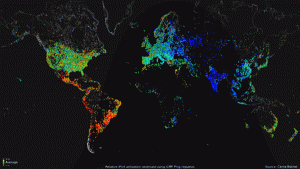2 TCP/IP networking
TCP/IP network was designed to build interconnection of networks, which is the inter network or the internet. A universal communication services over heterogeneous physical networks.
Internet is build on TCP/IP.

Majority of enterprise networks are run on the TCP/IP network.
TCP/IP model was developed in the 1970’s by the U.S. Department of Defense(DOD).
The OSI model is no longer used in today’s network.
TCP/IP model which is similar to the OSI model is modeled in layers. This layered representations leads to the term stack.

In a TCP/IP Model:
Application Layer
This is the highest layer in the TCP/IP model. It is a rather broad layer, encompassing layers five through seven in the OSI model. While this seems to represent a loss of detail compared to the OSI model, I think this is probably a good thing! The TCP/IP model better reflects the “blurry” nature of the divisions between the functions of the higher layers in the OSI model, which in practical terms often seem rather arbitrary. It really is hard to separate some protocols in terms of which of layers five, six or seven they encompass. (I didn’t even bother to try in this Guide which is why the higher-level protocols are all in the same chapter, while layers one through four have their protocols listed separately.)
Numerous protocols reside at the application layer. These include application protocols such as HTTP, FTP and SMTP for providing end-user services, as well as administrative protocols like SNMP, DHCP and DNS.
tent here.
Network Access Layer consists of frame and bits
Frame references the physical/data link.
Packet references the Network (IP)
Segment references the Transport (TCP)
TCP/IP model has been updated


